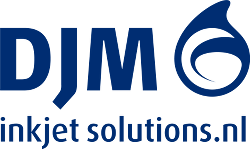How to select the 'right' printhead...

To get the maximum result out of your application the choice of the right printhead is the most important decision you have to make. But to select the right printhead you also need to investigate the substrates you want to use, combined with the type of ink. So, how to select the right printhead?
That is not an easy question to answer. Where do you start? Considering the availability of so many printheads in the market with all their different specifications, comparing them is not an easy task.
Substrates give guidance
Substrates can be divided in porous and non-porous. Water based inks need to be absorbed by the substrate, or vaporized by drying, and will only work with porous or treated substrates. For non-porous media-types you need other inks and printheads.
Two main streams of printheads
The first stream of printheads use thermal technology. The thermal inkjet principle is based on heat instead of electricity. The nozzle chamber holds tiny resistors that create heat, it vaporizes the ink to create a bubble.
As the bubble expands, some of the ink is pushed out of the nozzle onto the paper. Due to frequent heating and cooling the resistor loses effectiveness and the printhead wears out. Thermal printheads are therefore considered consumables and have to be replaced on a frequent basis. This ‘burn-in’ effect can shorten the lifespan of the printhead even more when the printhead is only partially used.
Thermal inkjet comes with limited choice of ink. The water based or aqueous inks are specially developed for working with the thermal printhead, and are usually supplied by the printhead manufacturer. Well known manufacturers of thermal printheads are HP, Memjet and Epson.
The second – and fastest growing – stream are the piezo electric based printheads. The share of piezo electric printheads is growing steadily due to practical and economic benefits. The piezo inkjet principle is based on piezo electric elements. Droplets are formed by an electrical charge that moves the piezo electric element backward and pushes the ink through the nozzle to the substrate. When it vibrates out, it pulls some more ink into the reservoir to replace the ink sprayed out. The most common piezo printheads are based on the ‘end shooter’ principle where the ink is sitting idle in the nozzle chamber until the moment of firing. There are also printheads using ink re-circulation where the ink is continuously recirculated above the nozzle plate. The result is a steady stream of ‘fresh’ ink at the moment of firing. Printheads with ink recirculation improve the ‘open time’ of the ink which means less printhead servicing. Printheads with recirculation can also be the solution for special inks. Piezo printheads are not consumable and can be used for many years. Less servicing and a long lifespan provide obvious economic advantages. Mayor benefit of the piezo electric printheads is that they come with a broad choice of ink, from water based (or aqueous), UV, fluorescent, magnetic, security, soft solvent and even edible inks. Well know manufacturers of piezo electric printheads are Kyocera, Fujifilm Dimatix, Xaar and Ricoh.
So,.......now what?
But there are more specifications of your application to think about, printing speed, resolution, ink compliancy, ink laydown, stitching possibilities, lifetime expectancy, serviceability etc. To make the right printhead choice for your projects, you need to start understanding your application and market requirements. Questions like; what print image quality do I really need? what ink can I use? and at what speed do I need to print? are a good start.
The higher the resolution the smaller the ink droplets need to be. Higher resolution will produce images with better definition and edge sharpness. High resolution printheads are used for text, security and complex 2D codes. A 1,200 dpi printhead would be outstanding for this. But for printing images the resolution could be 600 dpi. Reaching for the stars and having the best print image quality comes with a higher price, leaving you with higher cost and lower margin. If you have completed the shortlist of some printheads and ink you can run some tests to determine which printhead and ink can be used for your application.
Let the figures show
Run the numbers and start calculating with different options. Calculating scenarios can show you cost of ink (consumption) and printhead (lifetime expectancy). With thermal inkjet the printhead and the ink are consumables, where with piezo the printhead lasts much longer, but costs more.
Next to these considerations, a major cost driver is the availability of your system. How many service does your system need in terms of printhead lifespan, maintenance, flushing etc.?
The higher the uptime of your system, the higher the output, resulting in lower operational cost.
In my next blog I will elaborate on more, in-depth aspects of cost calculations.
In our 28 years of inkjet experience, we have provided many calculations and consulted many customers in their inkjet application. If you need advice about your inkjet project and related costs, please send me an email.

Arwin van Oostveen
International Sales Director
Mobile: +31 (0)6 21 33 14 93
Office: +31 (0)341 43 70 03
Email: arwin@djm.nl
LinkedIn: DJM
LinkedIn: Arwin van Oostveen





